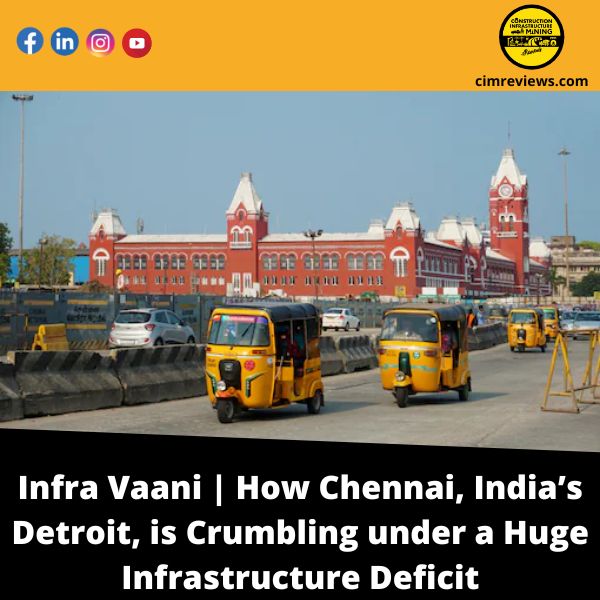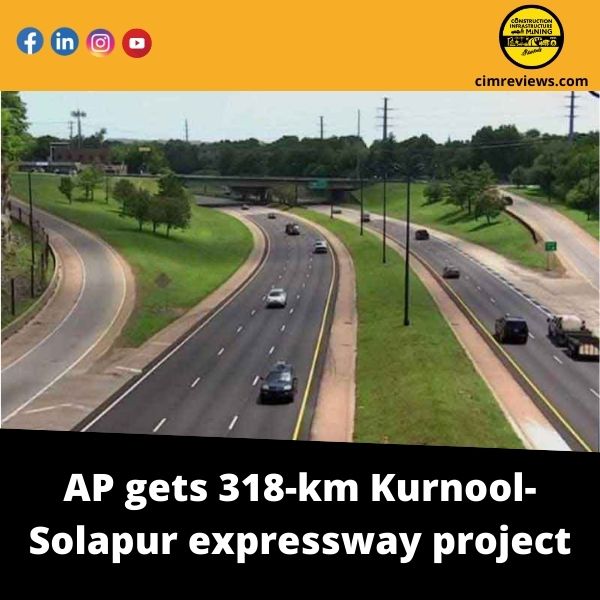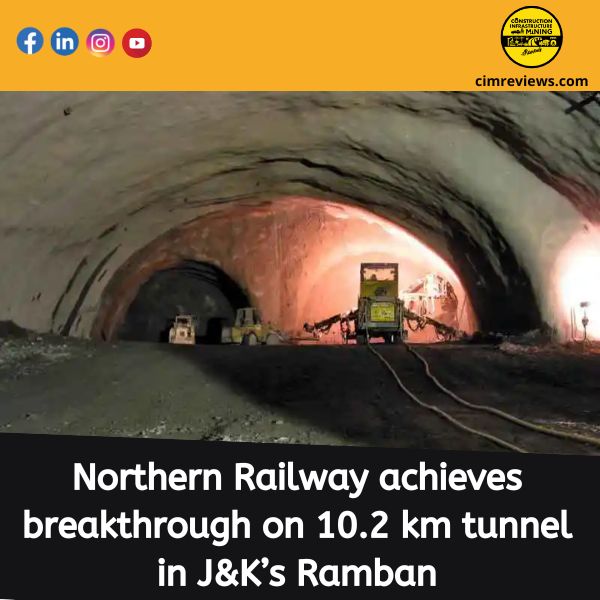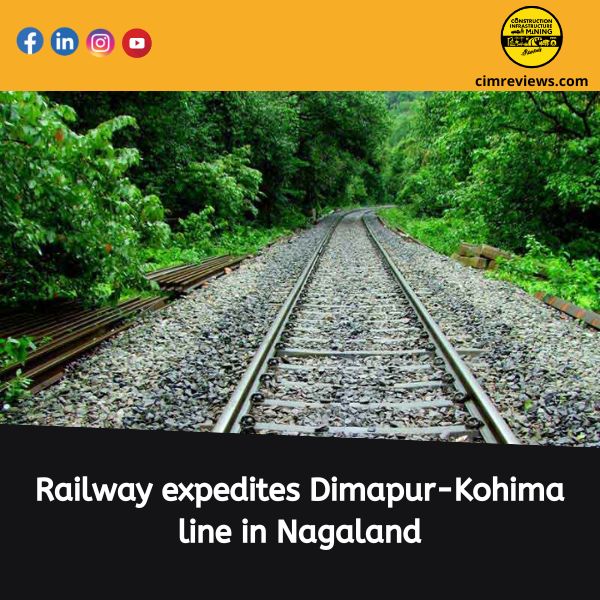
Infra Vaani, acclaimed urban infra specialist Akhileshwar Sahay delves into the infrastructural difficulties that Indian cities face and proposes remedies. He examines Chennai, India’s Detroit, this week.
I came upon a news piece in a prominent daily on May 1, 2022, with the headline: ‘Koyambedu bus stand transforms night shelter for almost 1k homeless.’
I wasn’t surprised by the tale because Chennai’s 40,000 homeless people are fighting to make ends meet in this vast city. Chennai, the British’s first Indian city, is withering under the weight of a massive infrastructure deficit.
Chennai’s population of 11.5 million in 2022 is nearly three times that of 4 million in 1981. By 2035, the city could have a population of 15 million people. The city is experiencing both drought and flooding (it receives annual 140 cm rainfall). It is an understatement to say that climate change poses a threat to Chennai’s survival.
Chennai is a mess of uncontrolled urbanisation, rash industrialization, and sloppy water management. Chennai went without water in 1974, 1982, 1992, 1996, 2003, 2017, and 2019.
“You’ve got modern buildings where thousands of people are working in a really nice setting and stations that are just nowhere near the same level,” Burnham told CN sister publication Local Government Chronicle. It’s something that can’t be allowed to go on like this.”
Reservoirs below zero, dried-up lakes, plummeting groundwater levels, schools, offices, hotels, and restaurants closed — tanker mafia ruled, water war raged, and police had to preserve water supplies – 2019 was a frightening year. To preserve Chennai, India’s lifeline had to contribute tens of millions of gallons of water from far-flung regions.
Drought in Chennai is a result of human action. The Chennai Master Plan for 2026 acknowledges that the city’s waterways, including the Cooum, Adyar, Buckingham, and Captain Cotton canals, as well as Otteri and Mambalam, have become sewer drains.
‘India’s Detroit’s’ arch-enemy is unplanned urbanisation and unrestrained industrialization. Floodplains, lakes, streams, and ponds have all been devoured. According to an Anna University study, Chennai waterbodies were down to 3.2 square kilometres in 2017 from 12.6 square kilometres in 1897, with larger damages in recent decades.
The IT corridor, a symbol of the city’s modernity, was developed at the expense of 230 square kilometres of marshland. It’s no surprise that Chennai is staring at Day Zero. The catchment areas and flood relief basins of waterbodies were blocked, paved over, and used as foundations for new development due to mistaken priorities.
Water scarcity has a significant influence on individuals at the bottom of the economic pyramid and those living on the outskirts of cities. For them, a municipal waterpipe infrastructure is a pipe dream.
What amount of water does Chennai require? Chennai’s water requirements grew from 1321 mld (million litres per day) in 1981 to 1980 mld in 2021.
During the 2019 drought, however, Chennai Metropolitan Water struggled to deliver 500 mld of water; even during good times, the supply rarely exceeds 830 mld. ‘Water consumption in Chennai Metropolitan Region would be 2238 mld in 2025.
up from 2074 mld in 2019′, according to the Mahindra-TERI Centre of Excellence research (2021). Only 1294 mld of water can be treated by water treatment plants. According to the study, the built-up area will increase to 708.3 square kilometres in 2025 (up from 608.3 square kilometres in 2019), while waterbodies would diminish to 38.4 square kilometres (against 50.7 sq. km. in 2019).
The Chennai Metropolitan Water Board wastes water: its daily water distribution loss of 35-40% is second only to the Delhi Jal Board.
Ground water is the default option when surface water is in disarray. According to a study conducted by Anna University, 60% of groundwater will be damaged by 2030.
Following the drought of 2000, Chennai implemented a new water harvesting scheme, but it failed due to poor implementation and maintenance.
Chennai, one of the wettest cities on the planet, turned to the ‘desert solution’ — desalination facilities – to quench its thirst. Two plants, each with a capacity of 100 mld and a cost of Rs 2,000 crore, are already running, as is a third plant with a capacity of 150 mld and a cost of Rs 1,259. A fourth, with a capacity of 400 million litres and a cost of Rs 6,078 crore, is currently under construction.
The desalination proposal is a case of bad economics. These plants are energy guzzlers with astronomical environmental consequences.
COST-EFFECTIVE DEVELOPMENT
The only option to rescue Chennai is to reduce consumption, reduce water loss to near-zero levels, implement large-scale rainwater collecting, and rejuvenate waterbodies, desilt lakes, and combat corruption.
This is not a jigsaw puzzle; the years 1903, 1943, 1969, 1976, 1978, 1985, 1996, 1998, 2002, 2005, 2010, 2013, 2015, and 2021 are years when Chennai saw heavy rainfall or catastrophic flooding. Chennai has been without water or drowning in water for decades!
The Intergovernmental Panel on Climate Change’s Sixth Assessment Report (2022) warns of high flood danger for several global coastal cities, including Mumbai and Chennai.
Politicians, predictably, blame the deluge on heavy rainfall. “Damages due to exceptionally heavy rains were inevitable,” then-Tamil Nadu Chief Minister Jayalalithaa reportedly declared in 2015.
I wish it were that easy.
Climate change and urban topography exacerbate the problem. However, construction devastation is the primary cause of Chennai’s repeated floods. The city’s hydrology has been neglected, ignored, and defiled as a result of development in Chennai.
Despite the tragedy of displacement, disruption, and death, Chennai continues on its destructive path of destroying wetlands, green cover, and forested regions to make way for built-space. The city added more new office space in 2021 than any other Indian city.
300,000 million cubic feet of water was drained into the sea during the 2015 flood; if it had been channelled and kept, the 2019 drought could have been avoided.
Chennai was also unable to avert the 2019 drought due to the death of its golden goose. Pallikaranai marshland’s natural flood basin was devastated and reduced to a tenth of its former size. The marsh’s water flow was halted by massive construction.
THE LAND OF WASTE
Drought, flood, and drainage are all linked. With 50% of Chennai without drains, the city’s waterbodies swallow 1073 mld of sewage every day. The obvious by-product is a stinky metropolis.
The capacity of the sewage treatment plant is 727 mld. By 2025, Chennai would generate 1,789.2 million metric tonnes of sewage; unless treatment capacity is increased, sewage will be discharged into rivers, lakes, and other bodies of water. Chennai will continue to stink.
Sewage, on the other hand, is an untapped goldmine. Chennai can produce one kilolitre of water for Rs 25, half the price of desalination plants, with decentralised waste water treatment at scale.
Sewage and solid trash are in fact congenital twins. According to a research published by Columbia University’s Earth Engineering Centre – Waste to Energy Research and Technology Council in 2011, Chennai produces 6,404 tonnes of rubbish each day, or 0.71 kg per capita, the highest in the country.
The exact amount of garbage generated in the Chennai Metropolitan Region is unknown, however estimates range from 5,000 to 10,000 metric tonnes per day. According to a research by the National Productivity Council, Chennai generates 68% residential, 16% commercial, 14% institutional, and 2% industrial trash.
Chennai is India’s second largest plastic trash generator, according to the Central Pollution Control Board, with 420 tonnes produced daily.
The 225-acre Perungudi dumping yard caught fire on April 30 this year. To put out the deadliest landfill fire in decades, it took four days, 13 fire engines, two skylifts costing Rs 20 crore, 120 firemen (247), millions of gallons of water, 22 earthmovers, 15 vehicles, and seven jet rodding machines.
Every day, 5,000 trucks transport unsorted garbage to eight solid-waste transfer centres – Perungudi in the south and Kodungaiyur in the north – from where they begin their journey to the disposal yards. Both are perched above mountains of toxic waste that have collected over the years. They are illegal dumping yards that break the 2016 Solid Waste Management Rules.
Every day, Chennai dumps 2800-3000 tonnes of garbage in Kodungaiyur and 2600-2800 tonnes in Perungudi, not to mention additional 1000 tonnes of building waste. Despite the fact that Chennai Corporation made source segregation necessary for residences, institutions, and business enterprises in all 200 wards in 15 zones starting October 2, 2017, this is all unsorted rubbish.
Chennai became the first metropolis in the world to privatise waste management in 2000, with disastrous results for the city, its inhabitants, and waste and conservation personnel.
But then there was Manali, a desert paradise. Manali is a Chennai neighbourhood that is both residential and industrial. The private operator whose contract was green-lighted with fanfare by Tamil Nadu chief minister Edappadi K. Palaniswami is incorrectly claiming the success of the Manali Model.
The success of the Manali model can be ascribed to the novel concept of paying individuals Rs 2 per kg for segregated waste. S. Devendran (2015), a municipal zonal officer, designed it.
Manali became Chennai’s first zero-waste zone in 2019. Manali’s streets are spotless, the number of bins has been cut in half, and the volume of household rubbish has dropped dramatically. Only a small portion of Manali’s rubbish is disposed of in landfills. The Manali concept demonstrates how empowered citizens can transform the world through creativity. It’s time to take the Manali Model to the next level.
Many cities throughout the world are aiming for zero waste generation. Littering, non-collection, non-segregation of waste, and finally depositing it in a poisonous landfill have entrapped Chennai in a vice-like grip.
This year, the Chennai Corporation would spend Rs 424 crore on solid garbage, including street sweeping and waste trucking. ‘Zero Waste Chennai’ is an idea that has arrived at the right time.
CHENNAI IS CHOKING
Even if the city escapes the drought and floods, Chennai residents will succumb to air pollution.
According to a Greenpeace research, 11,000 Chennai residents perished from air pollution in 2020, resulting in a Rs 1 lakh billion economic loss.
It is past time to solve the issue, as Chennai’s chases of polluting companies, excessive development, rising reliance on automobiles for mobility demands, rampant waste output, and unsegregated dumping in hazardous landfills would exacerbate the situation.
According to a 2012 study conducted by the University of California, Berkeley, Chennai ranked third in the generation of traffic pollutants, behind Kolkata and Delhi. Chennai was ranked second among 14 cities in per day particle emissions in a study conducted by the Centre for Science and Environment in 2018.
The dangers of proximate data are greater. Official statistics indicated that the average AQI was 342 to 385 with very bad air quality based on a 24-hour observation (6 a.m. on November 4, 2021 to 6 a.m. the next day).
GETTING BY ON GOD’S GRACE
I kept track of how many people died every day on Chennai’s roads. When the count reached 100, I came to a halt and exclaimed, “By God’s grace, one has survived Chennai roadways.”
On Chennai roadways, 2,191 pedestrians were murdered and 9,754 were injured between 2015 and 2020. According to the National Crime Records Bureau, 1,262 people were killed in traffic accidents in 2019. COVID prompted many Chennai residents to work from home, and the figure fell to 872 in 2020.
Chennai’s road rage is out of control, and there are reasons for it.
One, the number of road vehicles has risen past 60 lakh; in 1981, 1991, and 2011, it was 1.5 lakh, 6 lakh, and 36 lakh, respectively.
Second, with 2780 kilometres of road, Chennai’s vehicle density (29,000 vehicles per kilometre) is ten times that of Delhi.
Three, Chennai drivers are known for their wild driving. The number of motorists arrested for rash driving in 2020 was higher than the year before COVID-19.
Four, Chennai has the greatest number of two-wheelers in India, making riders prone to road rage fatalities.
Five, Chennai is an industrial city; in mixed traffic, large multi-axle freight transporters kill more people.’The worst off are pedestrians, whose mobility and safety are hampered by non-existent, broken-down, and/or obstructed sidewalks.
challenging street crossings; and floods during monsoon seasons,’ noted the World Bank in its report ‘Urban Transport in Chennai and Bangalore’ in 2004. Motor vehicles are gradually pushing bike riders off crowded highways in India, where they were formerly a dominant mode of urban transportation. Half of all traffic fatalities are caused by these two groups.’
In 2022, what was true in 2004 will be even more true. The foot soldier, on the other hand, gets a free pass because the city’s infrastructure is geared toward cars. Rent-seeking also promotes capital-intensive solutions.
It’s time to rebuild, redesign, and scale up infra for walkers and bicycles, with zero tolerance for intrusion on their territory.
To make matters worse, according to a 2008 research, 27% of Chennai’s road length is dedicated to parking, which is significantly more than other metropolises.
In my search for a clear solution, I came across two publications by urban planning expert Donald Shoup: ‘The High Cost of Free Parking’ (2005) and its sequel ‘Parking and the City’ (2018). He proposes a trio of solutions: one, charge reasonable market prices for on-street parking, two, use the revenue to benefit the city, and three, eliminate the requirement for off-street parking.
The Indian answer, on the other hand, has been: free on-street parking and a costly to build, maintain, and utilise multilevel pay-and-park type of parking off-street. As a result, there is a glut of free on-street parking, while pay and park spaces go underutilised. It’s time to break free from the terrible ‘parking paradox.’
URBAN MOBILITY THAT HAS BEEN GRIDLOCKED
Chief Justice Sanjib Banerjee and Justice Senthil Kumar Ramamoorthy of the Madras High Court prohibited the Tamil Nadu government from purchasing buses unless they were disabled-friendly on July 22, 2021, in response to a writ case filed by my friend Vaishnavi Jayakumar. Chennai has remained defiant to the high court’s orders to this day.
But this is only one of the many problems facing Chennai’s ageing bus infrastructure. Although the Metropolitan Transport Corporation or MTC website claims that 3,454 buses carry an average of 28.48 million people per day, the exact number of vehicles and their roadworthiness is unknown. In 2010, they transported 55 lakh passengers every day. In 2016, the MTC has 3,987 buses, with each bus carrying 1,300 people on a daily basis, the highest number in India.
For the age analysis of the fleet, I relied on data obtained through RTI by The Hindu in 2018. “At the time, only 674 buses were under five years old, 1,921 were between five and ten years old, and 1,121 were between ten and thirteen years old.”
According to the MTC website, the average age of the 3,454 bus-strong fleet is 8.14 years after adding 2,000 red-color buses built on truck chassis in 2018. The remaining 1,400 buses, which are four years old and have a floor height of four metres on truck chassis, are unusable by children, the elderly, the disabled, and ladies wearing saris. Furthermore, the Vehicle Scrapping Policy (2021) mandates the scrapping of buses that are eight years old or have accumulated a total mileage of ten lakh kilometres.
How many buses does Chennai require?
The city’s public transportation system must provide a remedy to traffic congestion during rush hour. The number of buses is determined by mode share, bus capacity, daily bus kilometres, average trips per person, journey duration, city size, and peak hour characteristics.
Singapore, a city state with 4.5 million citizens, has 10,000 buses, while Shenzhen, China, has 20,000 electric buses, with one-fourth the population of the projected Chennai Metropolitan Area.
The benchmark set by the Ministry of Housing and Urban Affairs (MOHUA) is 60 buses per 1 lakh people. MTC need 7,000 buses to meet MOHUA standards, based on the existing Chennai population, and 10,000 buses to meet the mobility needs of the Chennai Metropolitan Area.
Even the poorest Chennai residents have a right to buses that are convenient, safe, comfortable, inclusive, and economical.
Allow the government to purchase 10,000 air-conditioned, low-floor Volvo/Mercedes urban buses – either ‘Made in India’ or ‘imported’ buses – for less than Rs 1 crore each. The cost of a metro rail coach is Rs 10 crore.
But who will shoulder the cost of 10,000 buses at Rs 10,000 crore? Who else but the state? In Singapore, the Land Transport Authority, a government agency, purchases and owns buses, which are then operated by SMRT and SBS.
This is the procedure for obtaining the funds.
One, the 54-kilometer Chennai Metro corridor, which transports 1.5 lakh people daily, cost Rs 23,000 crore to construct. 10,000 buses will cost 40% less than the Metro and transport 50 lakh people every day, 33 times more than the Metro. ‘It’s all about the money, dumb,’ says the narrator.
Second, Tamil Nadu’s budget is Rs 3,60,000 crore, which translates to a 2.77 percent purchase cost for 10,000 buses. Where the money should come from is a no-brainer.
Three, compared to last year’s budget, Tamil Nadu’s provision for “social welfare” has been decreased by Rs 10,000 crore. Allow the state to provide luxurious 10,000 buses to Chennai residents as a free social welfare present.
What about the loss on operations? It’s time to learn from Donald Shoup’s books. Allow 60 lakh Chennai car owners to park their vehicles on city streets for a fee of Rs 100 per vehicle per day, totaling Rs 2,190 crore per year. Vehicles already occupy 27% of the Chennai road length, and they will eventually occupy 50% of the road length. It should be monetized. Make bus service completely free of charge. It will revolutionise mobility. It will also be open to all. Who else but Tamil Nadu, the state that first provided free midday meals in schools in 1925, can do it? Allow it to provide free, all-inclusive bus transportation in 2022.
ON THE SMOOTH TRAIL The Bollywood song ‘Babuji Dheere Chalna,’ sung by Geeta Dutt in the 1954 film ‘Aar Paar,’ encapsulates Chennai Metro Rail’s tumultuous voyage. Madras did not obtain Metro Rail in the 1990s because it was too preoccupied with building the 20-kilometer Chennai Mass Rapid Transit System, the country’s first elevated rail line, which cost Rs 1,171 crore and took two decades to finish.
When it was agreed to unite MRTS with Metro Rail last month, it was an utter disaster. Jayalalithaa experimented with the idea of a toy train in 2006, a 300-kilometer monorail that would boost public transportation in Chennai from 27% to 46%. The longest operational monorail network in the world at the time was 28.3 kilometres long in Osaka, Japan.
ON THE SMOOTH TRAIL The Bollywood song ‘Babuji Dheere Chalna,’ sung by Geeta Dutt in the 1954 film ‘Aar Paar,’ encapsulates Chennai Metro Rail’s tumultuous voyage. Madras did not obtain Metro Rail in the 1990s because it was too preoccupied with building the 20-kilometer Chennai Mass Rapid Transit System, the country’s first elevated rail line, which cost Rs 1,171 crore and took two decades to finish.
When it was agreed to unite MRTS with Metro Rail last month, it was an utter disaster. Jayalalithaa experimented with the idea of a toy train in 2006, a 300-kilometer monorail that would boost public transportation in Chennai from 27% to 46%. The longest operational monorail network in the world at the time was 28.3 kilometres long in Osaka, Japan.
ON THE SMOOTH TRAIL The Bollywood song ‘Babuji Dheere Chalna,’ sung by Geeta Dutt in the 1954 film ‘Aar Paar,’ encapsulates Chennai Metro Rail’s tumultuous voyage. Madras did not obtain Metro Rail in the 1990s because it was too preoccupied with building the 20-kilometer Chennai Mass Rapid Transit System, the country’s first elevated rail line, which cost Rs 1,171 crore and took two decades to finish.
When it was agreed to unite MRTS with Metro Rail last month, it was an utter disaster. Jayalalithaa experimented with the idea of a toy train in 2006, a 300-kilometer monorail that would boost public transportation in Chennai from 27% to 46%. The longest operational monorail network in the world at the time was 28.3 kilometres long in Osaka, Japan.
ON THE SMOOTH TRAIL The Bollywood song ‘Babuji Dheere Chalna,’ sung by Geeta Dutt in the 1954 film ‘Aar Paar,’ encapsulates Chennai Metro Rail’s tumultuous voyage. Madras did not obtain Metro Rail in the 1990s because it was too preoccupied with building the 20-kilometer Chennai Mass Rapid Transit System, the country’s first elevated rail line, which cost Rs 1,171 crore and took two decades to finish.
When it was agreed to unite MRTS with Metro Rail last month, it was an utter disaster. Jayalalithaa experimented with the idea of a toy train in 2006, a 300-kilometer monorail that would boost public transportation in Chennai from 27% to 46%. The longest operational monorail network in the world at the time was 28.3 kilometres long in Osaka, Japan.
ON THE SMOOTH TRAIL The Bollywood song ‘Babuji Dheere Chalna,’ sung by Geeta Dutt in the 1954 film ‘Aar Paar,’ encapsulates Chennai Metro Rail’s tumultuous voyage. Madras did not obtain Metro Rail in the 1990s because it was too preoccupied with building the 20-kilometer Chennai Mass Rapid Transit System, the country’s first elevated rail line, which cost Rs 1,171 crore and took two decades to finish.
When it was agreed to unite MRTS with Metro Rail last month, it was an utter disaster. Jayalalithaa experimented with the idea of a toy train in 2006, a 300-kilometer monorail that would boost public transportation in Chennai from 27% to 46%. The longest operational monorail network in the world at the time was 28.3 kilometres long in Osaka, Japan.
Fortunately, the project has been placed on hold. Chennai began developing a two-line, 45-kilometer metro rail system at a snail’s pace only in 2009.
It was built in stages over a decade, with the initial 10 km elevated segment opening in June 2015, followed by the underground stretch in 2019, and a 9 km extension in 2021. With 1.5 lakh daily riders, heavy losses, and increased debt servicing, the Chennai Metro belly is on the verge of collapsing.
MOTHER OF ALL ILLNESSES On February 14, 2017, Justices Pinaki Chandra Ghose and Amitava Roy of the Supreme Court of India delivered judgement in India’s most high-profile corruption case, upholding the trial court verdict and sentencing Sasikala, Sudhakaran, and J. Ilavarasi to four years in prison; with Jayalalithaa dead, the Supreme Court of India upheld the trial court verdict, sentencing Sasikala, Sudhakaran, and J. Ilavarasi to four years in prison, appeals against her were abated.
If Chennai chokes owing to haphazard building, the omnipresent corruption — the unholy politician-official-contractor nexus – will be the main conspirator. “The germ of corruption in Chennai was initially sown in the late 1960s during Congress government.
argues journalist N. Ram in his book “Why Scams are Here to Stay: Understanding Political Corruption in India.” C.N. Annadurai’s integrity was unimpeachable when he became chief minister of Tamil Nadu (then Madras state) in 1967, and he ran a spotless government for two years before his untimely death.
Probity died in Tamil Nadu with Annadurai’s death. M. Karunanidhi’s cabinet was ousted on January 31, 1976, reportedly due to corruption allegations. Though the majority of the 21 claims in the final report were baseless, the Justice Sarkaria Commission called it “scientific corruption.”
MGR’s second term (1980-1984), when he was still an anti-corruption warrior, set the groundwork for Tamil Nadu’s own type of corruption.
Corruption has been a more serious threat throughout the years. Is there a DEATH ACCELERATOR? The Tamil Nadu Assembly was given a harsh awakening in July 2017 when the state government announced that the Chennai Metropolitan Area would be expanded to 8,878 square kilometres, making it the country’s largest urban agglomeration.
Chennai’s demise will be hastened by this decision.
Construction, Infrastructure and Mining Group Media Publications
General News Platforms – IHTLive.com
Entertainment News Platforms – https://anyflix.in/
Legal and Laws News Platforms – https://legalmatters.in/
Podcast Platforms – https://anyfm.in/









%20/23%20cimr%204.jpg)
